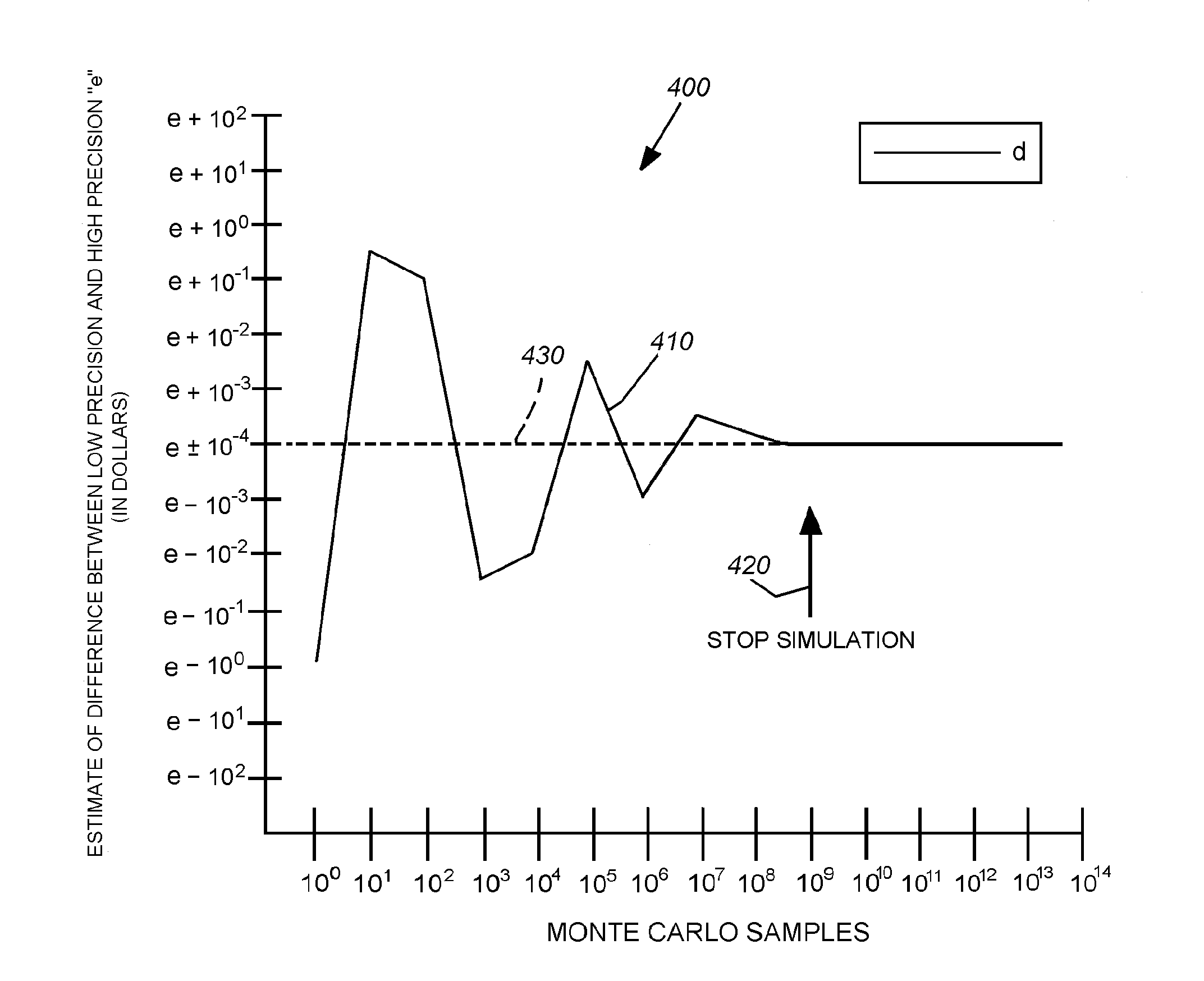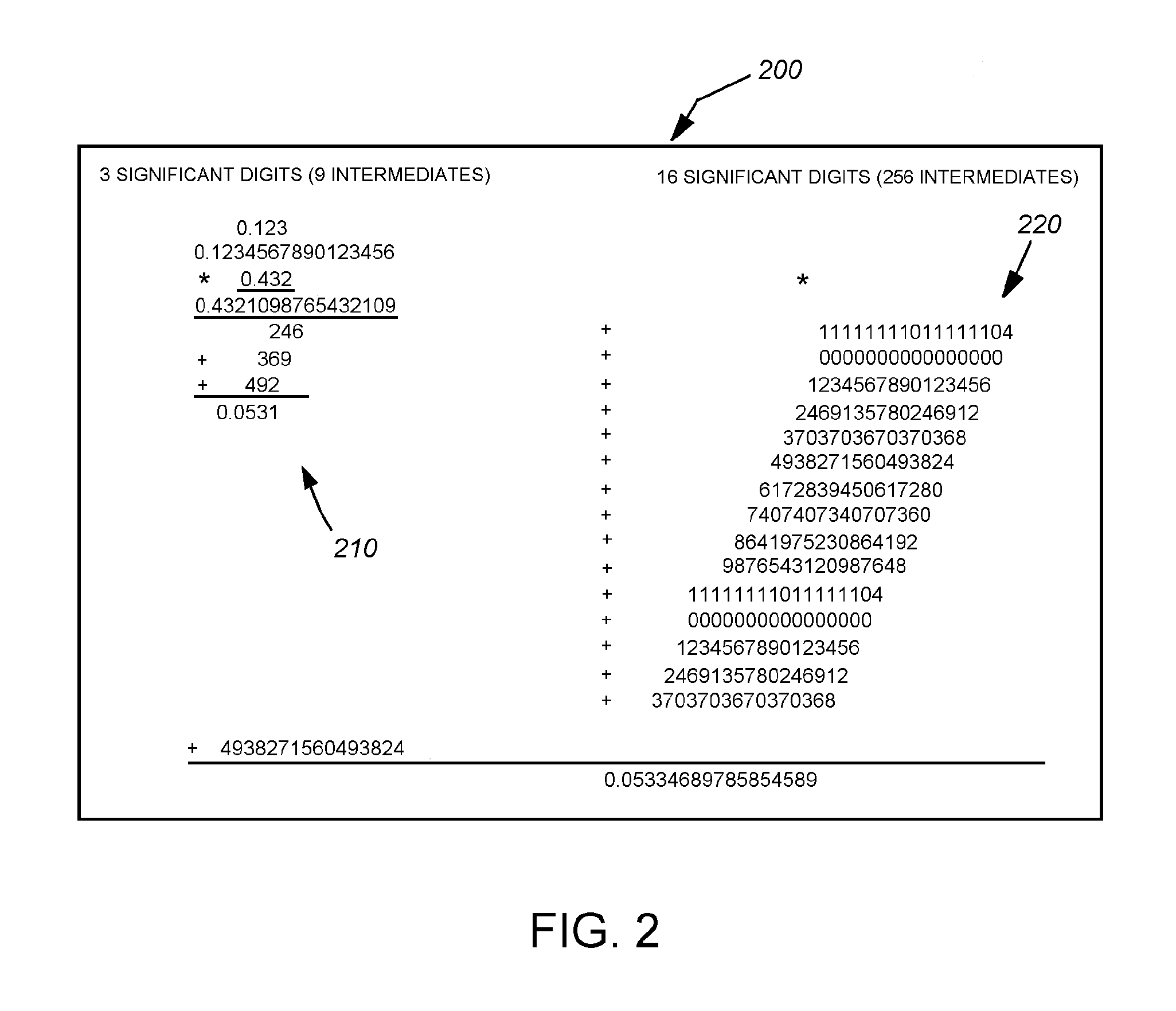System and method for achieving improved accuracy from efficient computer architectures
a computer architecture and efficient technology, applied in the field of system and method for achieving improved accuracy from efficient computer architectures, can solve the problems of original money paid for the option being lost without benefiting the buyer, and achieve the effects of reducing error, reducing cost, and reducing cos
- Summary
- Abstract
- Description
- Claims
- Application Information
AI Technical Summary
Benefits of technology
Problems solved by technology
Method used
Image
Examples
Embodiment Construction
I. Principles of Operation
[0051]With reference to the computational results depicted in FIGS. 1 and 2 above, intuition might suggest that the final results of averaging across Monte Carlo simulations cannot be more accurate than the number of significant digits used in each simulation. A counterintuitive effect called “coarse coding”, however, does indeed allow the final average across low-precision results to have much higher precision than its constituent operands; provided the summation operations that derive the final average are calculated in high precision. Thus, it is possible for Monte Carlo simulations to be carried out in low precision by an efficient computer architecture and arrive at equally accurate results compared to a high-precision-only computer architecture that uses potentially 100 times more power. Further investigation into the practical use of this technique, however, discovered an anomaly, which is shown in the graph 300 of FIG. 3.
[0052]As in FIG. 1, the simu...
PUM
 Login to View More
Login to View More Abstract
Description
Claims
Application Information
 Login to View More
Login to View More - R&D
- Intellectual Property
- Life Sciences
- Materials
- Tech Scout
- Unparalleled Data Quality
- Higher Quality Content
- 60% Fewer Hallucinations
Browse by: Latest US Patents, China's latest patents, Technical Efficacy Thesaurus, Application Domain, Technology Topic, Popular Technical Reports.
© 2025 PatSnap. All rights reserved.Legal|Privacy policy|Modern Slavery Act Transparency Statement|Sitemap|About US| Contact US: help@patsnap.com



